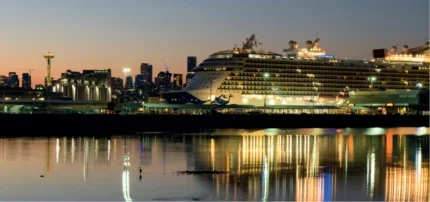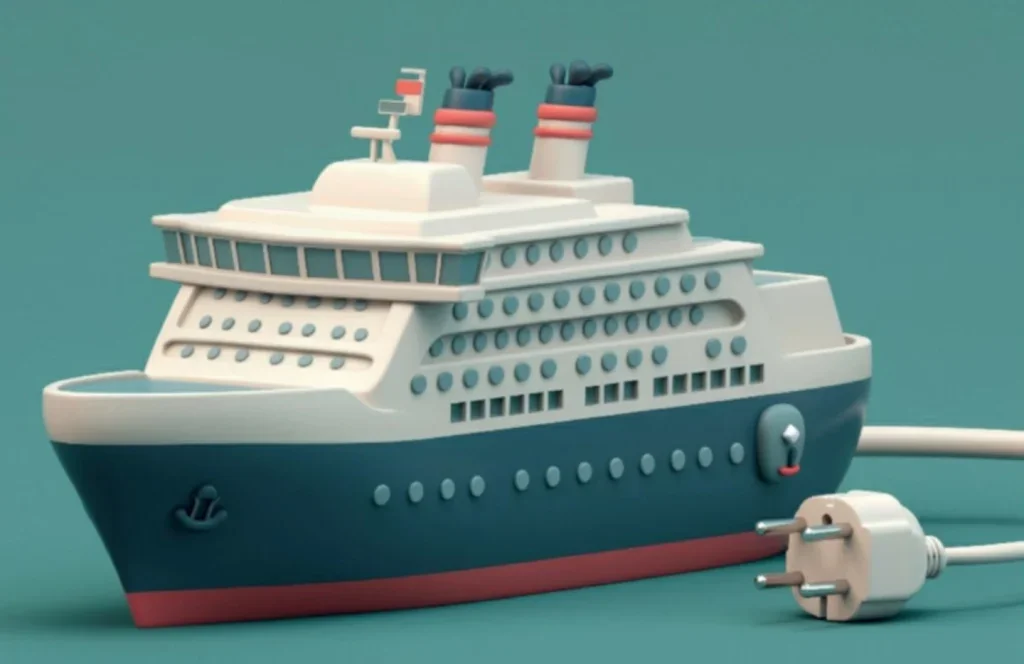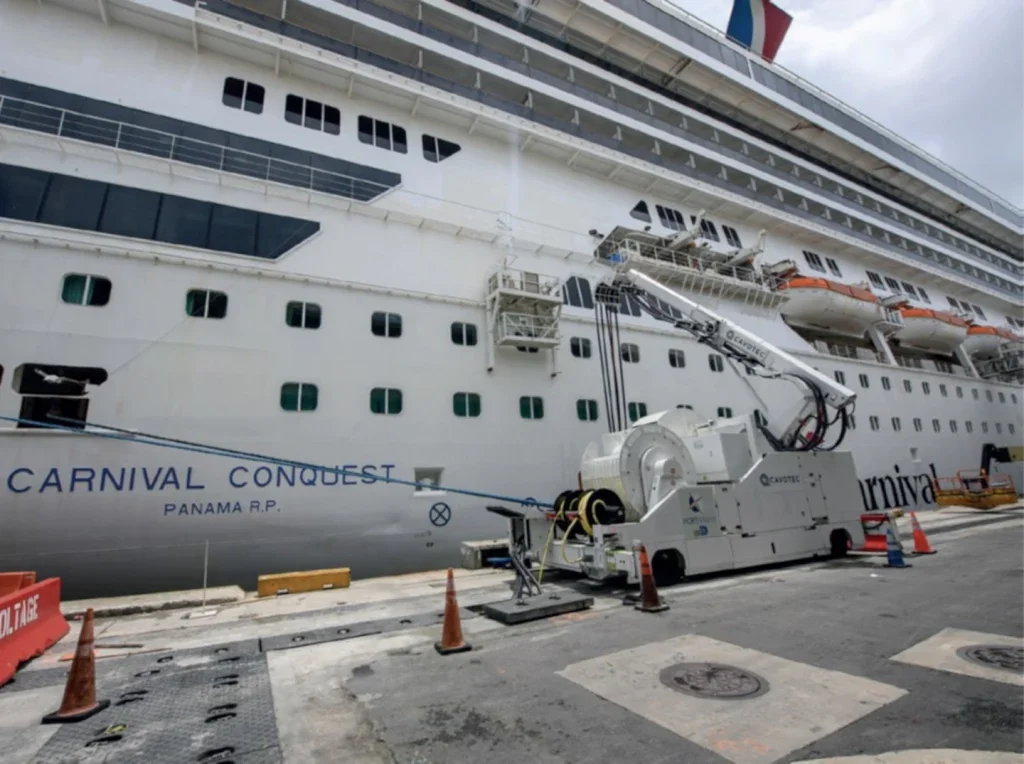
The shipping industry is one of the biggest contributors to global greenhouse gas emissions. It is responsible for roughly 3% of global emissions, according to figures from the United Nations, which is comparable to the aviation sector. Cruise may only be a small part of that sector, but it is under increasing pressure to do more to reduce its environmental impact, hence its efforts to switch to alternative fuels and, increasingly, turn to cold ironing when at port.
Cold ironing is a ship’s use of shore power for its auxiliary engines, so that it does not have to burn bunker fuel. The result is a significant reduction in emissions when a ship is stationary at berth. Indeed, some estimates suggest that shoreside electricity systems can reduce in-port emissions by up to 98% by allowing ships to switch off their engines.
This huge benefit makes the use of SSE systems seem like a no-brainer for any operator concerned about climate change, even before one considers the growing regulatory imperative. The EU’s Fit for 55 programme, for example, which commits the bloc to a net reduction in greenhouse gas emissions of at least 55% by 2030, stipulates that all main ports in the EU will have to install shoreside electricity capability within the same period.
Globally, the Cruise Lines International Association (CLIA) has long been encouraging ports which host cruise ships to prioritise shoreside power supply facilities. Nevertheless, an investigation by OpenDemocracy in late 2023 found that cruise ships frequently fail to use shore power even when it is available, instead choosing to burn diesel because it is cheaper. The report, using data from Southampton, the UK’s largest cruise port, suggests that only one in ten cruise vessels has connected to shoreside power capacity since it came online in April 2022.

The world’s largest cruise operator, Carnival, has cold ironing capability on 64 of its ships. It leads the industry with 67% of its fleet equipped to use shoreside power, but that suggests the cruise sector has a long way to go. The responsibility of continuing that journey does not lie solely with operators. After all, Carnival currently has twice as many shore power-capable ships than there are ports equipped to support cold ironing.
Furthermore, the gap is set to widen. Carnival is fitting shore power capability to three more ships in 2024, and a deal with Swiss technology company ABB Group will see 30 more shore power connections added to Carnival ships over the next few years.
Ports need power
Cold ironing – a term that came into use when vessels ran on coal-fired engines and the fires running them could be doused and go cool when in port – has come to mean the use of shoreside electrical power, which enables ships in port to turn off their main and auxiliary engines. The power load for all operations that need to continue while at berth is drawn entirely from onshore generation capacity.
As it is understood to be an effective means of reducing emissions, regulations are increasingly making cold ironing mandatory for shipowners and operators. For example, EU Directive 2014/94/EU urged member states to implement alternative infrastructure such as shoreside power technologies by 2025. The EU’s TEN-T Program also states that funding is available to cover part of the research and implementation costs.
The goal is to improve air quality, reduce harmful emissions, and lower the carbon footprint of ports as well as cruise vessels. Carbon emissions could fall by as much as 30%, and NOx and particulate emissions by up to 95%. One recent study showed that the carbon emissions from a cruise ship could fall from 72.2t to around 50t in one 10-hour stopover using shoreside power.
For this to be achieved, however, the right shoreside infrastructure must be in place. Currently, that is not a given. Ports and ships must have compatible electrical infrastructure, which may require retrofitting many vessels, and incorporating cold ironing capability into all new builds. Safety mechanisms and protocols must also be in place to support the continuous transfer of power.
Ports will need a high-voltage power grid at the port, frequency and voltage converters and transformers, sufficient cable reel with the appropriate connectors, as well as the necessary control panels and connection boxes. On vessels transformers, power distribution systems, frequency converters, cables, connectors and control panels will be crucial parts of the power system.
All of this comes at a cost, and there could well be disruption while this infrastructure is put in place. This is partly why relatively few ports currently have put in place the necessary elements for cold ironing. In the EU, time is short, given the 2025 deadline, which is why action is being taken, but ports in many parts of Asia and Africa do not have the necessary infrastructure and show little signs for progress.
It is no surprise that the US is leading the way on shore power, as more cruise journeys start from there than from any other country. Juneau, Alaska, started providing shoreside power more than 20 years ago, and San Diego, California, first introduced it in 2010. In Brooklyn, New York, the cruise terminal has provided shore power since 2017, but only at one berth.

The Port of Seattle, Washington, recently brought in a rule requiring all homeported cruise ships to use shore power by 2027. It is the first US port to independently stipulate this requirement. “Oceangoing vessels, including cruise ships, are the number one maritime polluter in the Puget Sound area,” commented Jayne Stevenson, climate policy associate for Pacific Environment when the rule was passed by the Port of Seattle Commission in June. “We urge the state of Washington to implement a statewide shore power policy to eliminate air and water pollution from all oceangoing vessels at the ports and protect the health and well-being of port communities.”
“Using shoreside electricity to power our ships in port is an integral part of our global strategy to reduce GHG emissions and minimise our environmental footprint.”
PortMiami recently became the first major cruise destination on the US eastern seaboard to provide shore power connections at five cruise berths, and Carnival Conquest will be the first cruise vessel to plug into the local electric grid to power its onboard systems and equipment.
“Using shoreside electricity to power our ships in port is an integral part of our global strategy to reduce greenhouse gas (GHG) emissions and minimise our environmental footprint,” said Carnival Corporation chief executive Josh Weinstein when the announcement was made. “It’s been over 20 years since our company first pioneered shore power for the cruise industry, yet adoption remains limited to just 2% of cruise ports worldwide.”
According to CLIA’s 2023 Global Cruise Industry Environmental Technologies and Practices Report, 34 ports worldwide currently have at least one cruise berth equipped with onshore power, a further 24 projects have been funded, with 16 more in the planning stages.
In the UK, the Port of Southampton opened its £9m shore power facility in 2022, and Portsmouth International Port has a £19.8m grant from the Zero Emissions Vessels and Infrastructure competition to design, build and operate a shore power system across three berths.
In Germany, the Port of Kiel’s first shore power supply plant began operating at the Norwegenkai in 2019, providing power to Color Line ferries. The port also uses 100% green power. In Spain, Barcelona is requesting bids for a €14m construction project to build shoreside power infrastructure as part of its Nexigen Project. The Port of Tarragona is also in the planning phase, while the Port Authority of Valencia is drawing up plans to become emissions-neutral by 2030, which will require the construction of a new passenger terminal with shore power capability.
Major projects are also underway in Trondheim, Norway, and at Ports of Stockholm in Sweden, where two berths will have shoreside power connections. The Port of Aarhus, Denmark, launched its first shore power facility for cruise ships in 2023, with AIDA Cruises’ AIDAmar the first vessel to connect. Similarly, Copenhagen Malmo Port, Denmark, began offering cold ironing capability in 2021.
Keeping pace with progress
Pressure is building for both ports and cruise vessels to be equipped for cold ironing, but there are some impediments to their progress. One is cost, the other is standardisation. Both issues were raised at the Seatrade Cruise Global panel in April, where concerns over a lack of standardisation were raised, highlighting the fact that vessels and ports sometimes use different connectors.
Furthermore, building any system, not least one that is universally compatible, comes at a price, and the cost is rising ‘exponentially’, according to Emily Bishop, senior director of sustainability at Norwegian Cruise LineHoldings, who spoke on the panel.
One recent study suggests that the capital cost of installing cold ironing infrastructure is currently around £6.6m, with a potential payback on capital and operating costs in seven years. This falls to 3.5 years, if the 50% EU subsidy is available. This calculation depends on vessels taking advantage of the infrastructure, and unless they are forced to by regulations, some may choose to burn bunkered fuel to save money. Pricing electricity at a similar cost to running engines will be essential for ports looking to recoup their investment.
Overall, the industry is making progress on environmental performance, and CLIA predicts that, by 2027, 174 vessels will have shoreside power connectivity. The way ahead may not be plain sailing, but at least the industry is seemingly directing its energies in the right direction.






